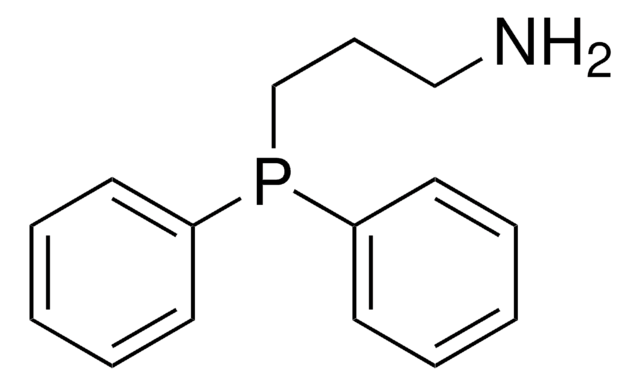52411
Heptafluorobutyric acid
suitable for ion chromatography, ≥99.5% (GC)
Synonym(s):
Edman Reagent No. 3, HFBA, Perfluorobutyric acid
About This Item
Recommended Products
vapor density
7 (vs air)
Quality Level
vapor pressure
~10 mmHg ( 25 °C)
description
anionic
assay
≥99.5% (GC)
form
liquid
shelf life
limited shelf life, expiry date on the label
technique(s)
ion chromatography: suitable
refractive index
n20/D 1.3 (lit.)
bp
120 °C/755 mmHg (lit.)
density
1.645 g/mL at 25 °C (lit.)
cation traces
Al: ≤0.5 mg/kg
Ba: ≤0.01 mg/kg
Bi: ≤0.01 mg/kg
Ca: ≤2 mg/kg
Cd: ≤0.01 mg/kg
Co: ≤0.01 mg/kg
Cr: ≤0.01 mg/kg
Cu: ≤0.01 mg/kg
Fe: ≤0.1 mg/kg
K: ≤0.5 mg/kg
Li: ≤0.01 mg/kg
Mg: ≤1 mg/kg
Mn: ≤0.01 mg/kg
Mo: ≤0.01 mg/kg
Na: ≤3 mg/kg
Ni: ≤0.01 mg/kg
Pb: ≤0.01 mg/kg
Sr: ≤0.01 mg/kg
Zn: ≤0.05 mg/kg
SMILES string
OC(=O)C(F)(F)C(F)(F)C(F)(F)F
InChI
1S/C4HF7O2/c5-2(6,1(12)13)3(7,8)4(9,10)11/h(H,12,13)
InChI key
YPJUNDFVDDCYIH-UHFFFAOYSA-N
Looking for similar products? Visit Product Comparison Guide
Application
Linkage
related product
signalword
Danger
hcodes
Hazard Classifications
Skin Corr. 1A
Storage Class
8A - Combustible corrosive hazardous materials
wgk_germany
WGK 3
flash_point_f
Not applicable
flash_point_c
Not applicable
ppe
Faceshields, Gloves, Goggles, type ABEK (EN14387) respirator filter
Choose from one of the most recent versions:
Already Own This Product?
Find documentation for the products that you have recently purchased in the Document Library.
Customers Also Viewed
Articles
LC/LC-MS method identifies 8 aminoglycosides in pork using Discovery® DSC-18 SPE and Ascentis® Express C18 UHPLC, per Chinese standards.
Our team of scientists has experience in all areas of research including Life Science, Material Science, Chemical Synthesis, Chromatography, Analytical and many others.
Contact Technical Service












